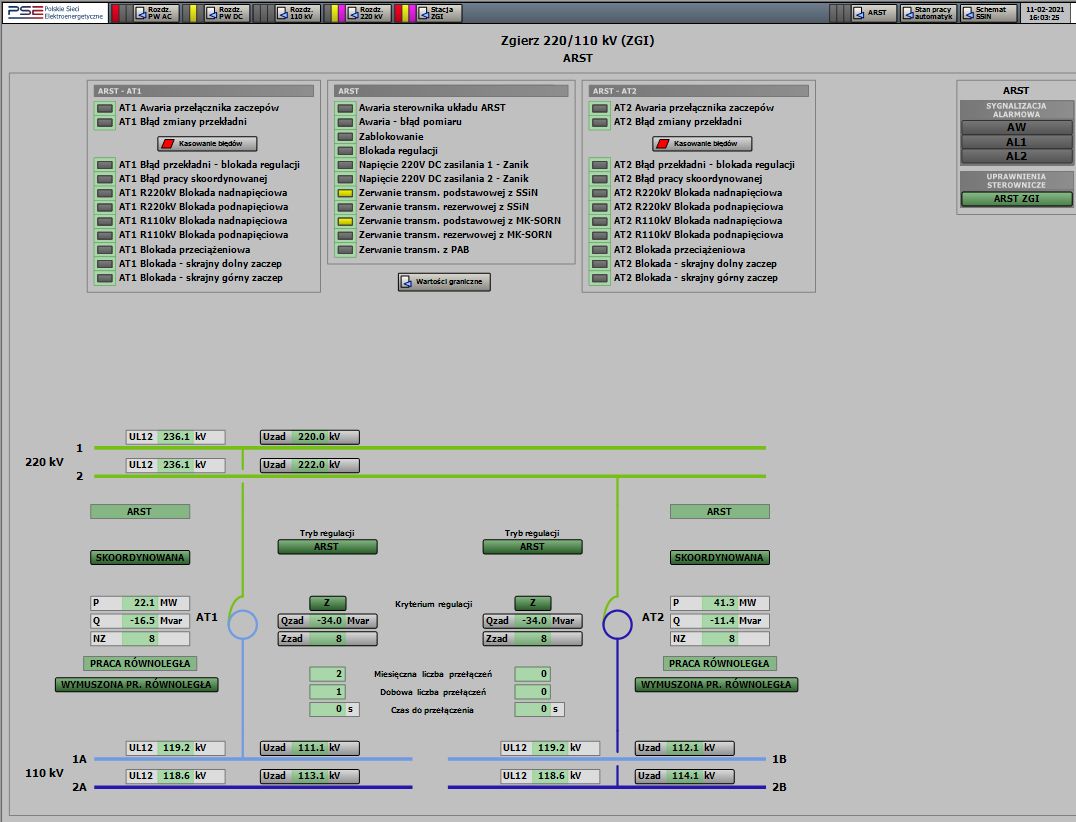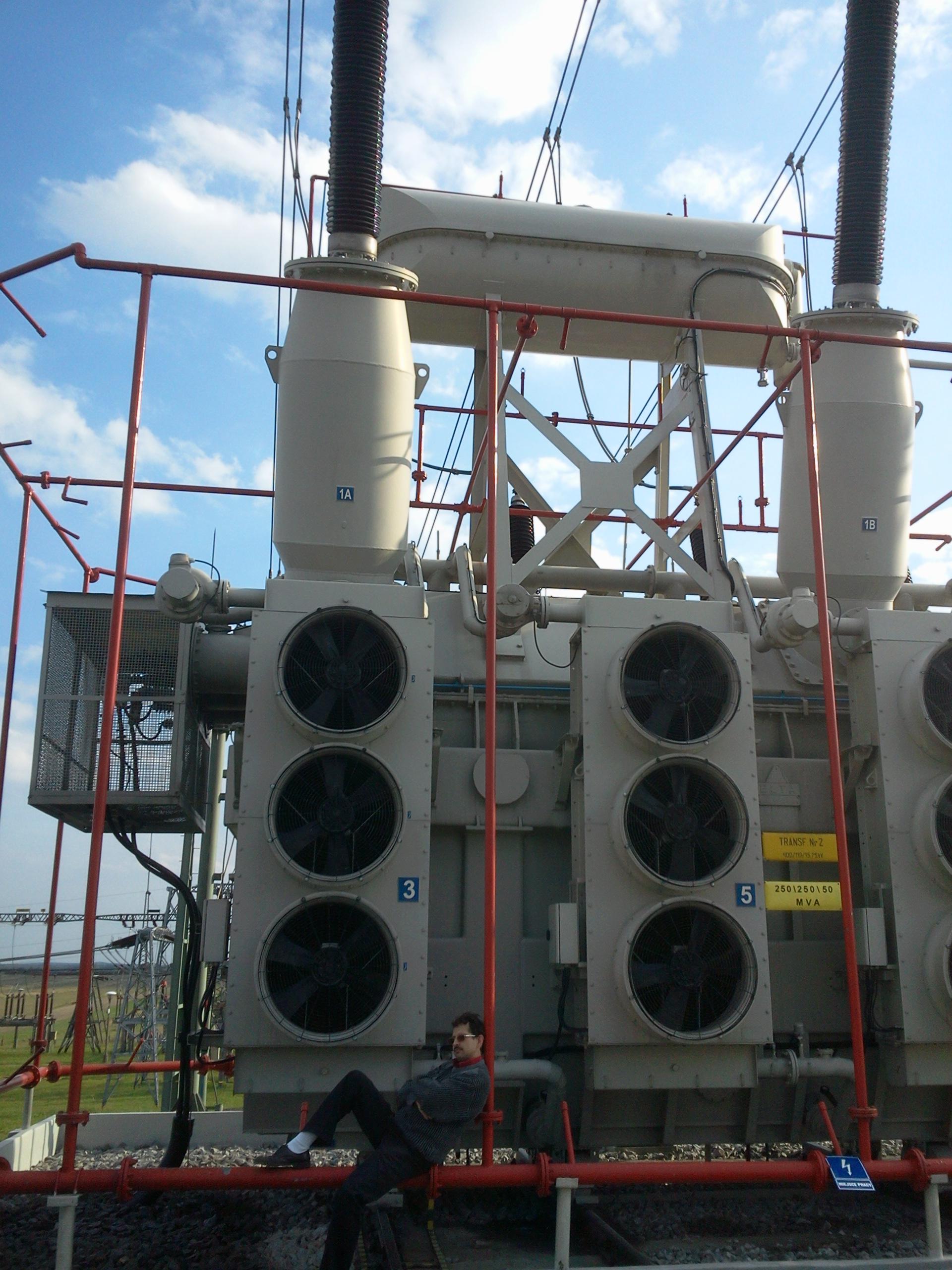ARST SYSTEMS
Automatic Regulation Systems for Transformer Station (ARST) are autonomous multi-parameter regulation systems which, through automatic control of transformer tap changers, can adjust one of the selected voltage parameters and shape the reactive power distribution in the LV and HV transformer and transmission station. They can interact with ARNE systems (generator voltage regulation for the power plant) and URST (regulation with RES), and use the available reactive power sources in the form of shunt reactors and capacitors.At the same time, they constitute an executive system for the master voltage and reactive power control area system in the National Power System (the Area Voltage Regulation System), controlling the regulation in the electrical power system area covering up to several dozen stations.
ARST systems are designed for automatic operation of the extra high voltage transformer station in the following scope:
- maintaining the set voltage levels on busbars of the transformer station;
- maintaining and optimising reactive power flowing through auto/transformers, also in parallel or coordinated regulation of many transformers;
- auto/transformer ratio control (setting the transformer tap changer's preset position).
The above objectives are achieved by the system thanks to adjustable regulation criteria by using the regulation capabilities of auto/transformers installed in the station and equipped with on-load tap changers in the allowable area of their auto/transformers' operation and with an optimally low number of tap changes.
The ARST system can operate as a local autonomous regulation system or as an actuator of the master voltage and reactive power regulation system in the National Power System (the Area Voltage Regulation System).
Remote control and supervision over the operation of ARST can also be carried out using the DYSTER system from the levels of the Area Power Dispatching Centre and the National Power Dispatching Centre, through a terminal with functionality in terms of ARST operation similar to that of the local terminal in the station.
ARST systems can be used in LV transformer and transmission stations with two or more voltage levels, with any configuration (two or more transformers, working in parallel or individually).
URT SYSTEMS
The URT regulator range developed by the Institute of power Engineering – Research Institute, Gdańsk Division has been used in Polish power industry for many years.
They are designed to automatically maintain the set voltage value of the lower side of two- or three-winding transformers equipped with on-load tap changers.
The main areas of application include MV transformer stations, customer stations of wind farms and power supply for auxiliaries in power plants.
Voltage regulation is carried out within the range determined by the set undervoltage and overvoltage interlocks, overload interlocks and interlocks for extreme positions of the tap changer. The real-time clock allows for setting four time zones with different preset voltage values
The adjustable compensation of the load current influence ensures that the set voltage is maintained at the remote recipient.
The regulator features built-in diagnostic functions that check not only the correctness of input signals and the effectiveness of tap changer control, but also the functioning of the device's internal circuits.
The regulators are equipped with a keyboard and LCD display that enable reading of current measurements, signalling of blockages and failures as well as parametrisation of the regulator.
They have communication channels (DNP3 or Modbus protocols) enabling data exchange and remote control with SCADA in the station or with dispatch centres. It is also possible to remotely control the regulator within a limited scope using binary signals.
APPLICATION SOFTWARE – URTMEN
Similarly to the keyboard and display, the dedicated URTMEN application program (designed for the DNP protocol) allows for current reading of measurements, signalling of blockages and failures and parametrisation of the regulator. In addition, it enables reading and archiving data from the regulator's recording memory and displaying these data on a computer screen. The URTMEN software communicates with the regulator through the service port as well as through communication channels for remote control.
Detailed information
Tomasz Ogryczak
(+48 58) 349-81-60
t.ogryczak@ien.gda.pl

 Products
Products Regulation systems
Regulation systems Voltage and reactive power regulation systems in transmission and distribution networks
Voltage and reactive power regulation systems in transmission and distribution networks Products
Products Regulation systems
Regulation systems Voltage and reactive power regulation systems in transmission and distribution networks
Voltage and reactive power regulation systems in transmission and distribution networks


 1. System URT.pdf
1. System URT.pdf